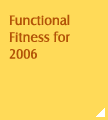| | Home| Sitemap | |
|
|
Articles Does Your Soulder Need A Shoulder To Cry OnA healthy shoulder is a result of good muscle balance. To have a good muscle balance it is imperative to understand the role of mechanics and blood circulation. This is of vital importance, especially in athletes competing in sports that involve continuous shoulder movement. It is also important for these athletes to understand the importance of training and exercise to treat shoulder injuries. Shoulder injuries are very specific and certain injuries tend to worsen when exercised in a particular way. It is easy to avoid the worsening exercises but hard to recognize the exercises that can rehabilitate a specific shoulder injury. Most shoulder injuries are caused by muscular imbalance. This imbalance is usually caused by a sport specific training regimen. Some muscles become highly developed and strong while the others remain where they were. In case of shoulder injury in an athlete the following is recommended: 1. Until and unless the cause of the injury is determined, the shoulder should not be exercised in any way. 2. In case of inflammation apply ice. 3. Isolate the part that is injured - ligaments, tendons etc. and the area of injury. The most susceptible parts for a shoulder injury are bicipital groove and coracobrachialis. In case of a tear to the ligament or tendon, surgery becomes important. Weight lifters and power lifters are mostly prone to shoulder injuries of a different nature. Muscles keep the shoulder joint in place including the glenoid cavity that accommodates the ball-and-socket in which the head of the humerus plays. Weight lifters are prey to a very common shoulder injury - over rotation of the arm caused by a too strong pectoralis musculature. The muscles along with teres major, try to cause rotation against the rotator cuff causing shoulder injury. Prevention and treatment comprises of: 1. Restoring nerve supply. 2. Relieve the spasm causing the shoulder injury by acupressure right in the middle of the pectoralis and teres major. 3. Cut off all exercise aggravating shoulder injury and any contraindicating exercise directly or indirectly contributing to shoulder injury. Healing is possible on restoration of nerves and blood circulation. After going through a few chiropractic treatments and assessing the progress, a rehabilitation exercise regimen can be prescribed. These exercises should be free hand to begin with and weights could be introduced at a later stage. Consumption of calcium and magnesium is recommended through diets rich in these minerals. The treatment should be kept as short as possible keeping in mind the response of the patient suffering from shoulder injury. The patient should feel "comfortable" with the exercise regimen and progress without any unnecessary acceleration. Julian Hall - Director of Claims Master Group. Personal Injury Claim,No Win No Fee, Shoulder Injury Advice Nutrition Is Exercise a Dirty Word - We all know that exercising is an important part of maintaining a healthy lifestyle. Caroline Cardenas One Womans Crusade For Good Health - A short bio on Carolina Cardenas and her attempt to clean up the health supplement industry. Build Those Muscles Burn That Fat Right - The world of physical fitness centers itself on muscle building for weight loss. Prozac and Fluoxetine Whats the Diff - Some patients claim that brand name drugs work better than generic ones. Make yourself Happy Healthy and Wealthy with the Power of Neuro Linguistic Programming - Along with other effective forms of healing, including homeopathic medicine, energy healing, and naturopathic medicine, NLP is one of the most healing tools available. more... |
©Copyright 2025 Nutrition Information.. All rights reserved. Unauthorized duplication in part or whole strictly prohibited by international copyright law. |



